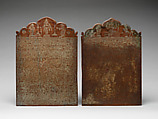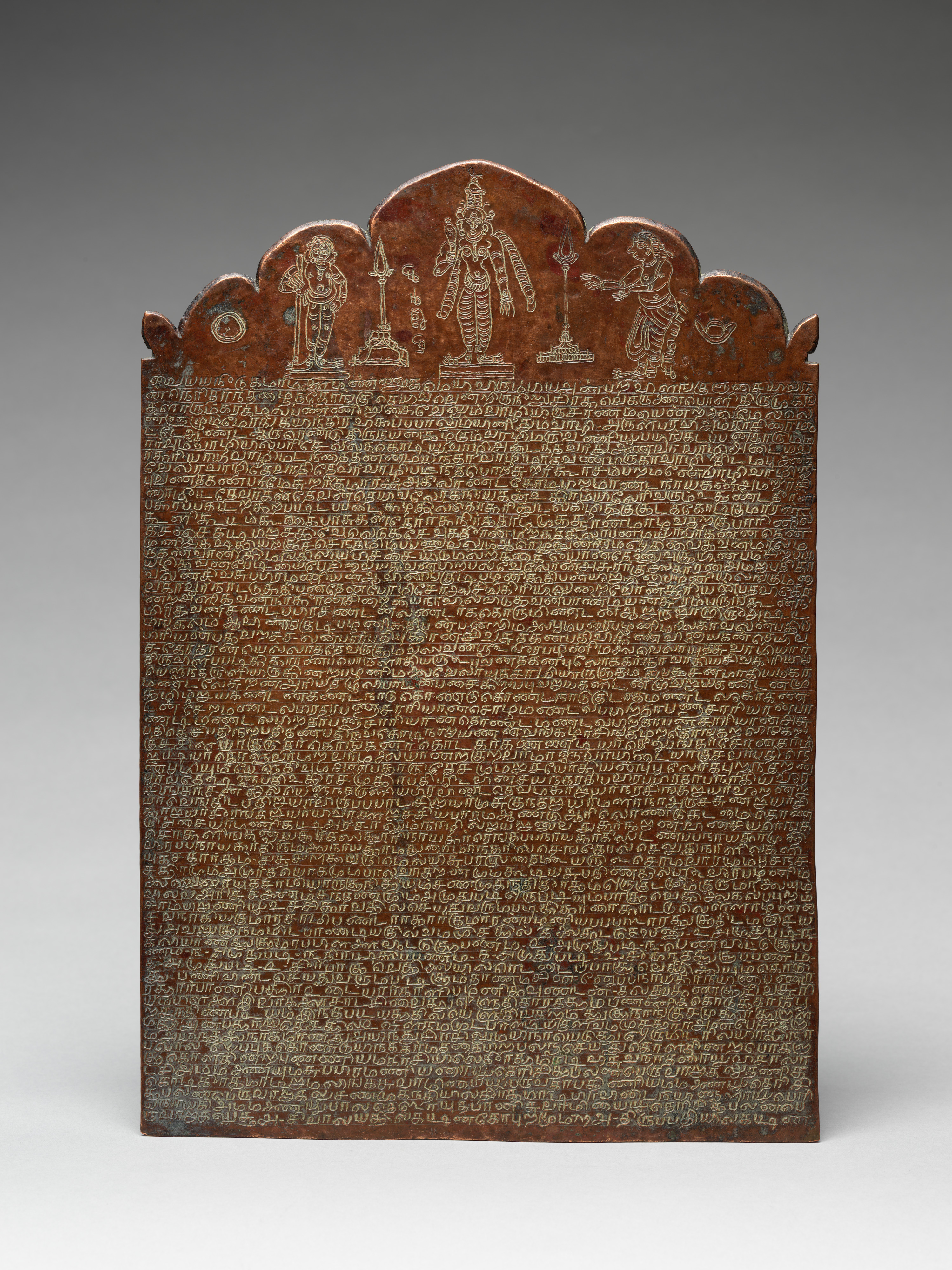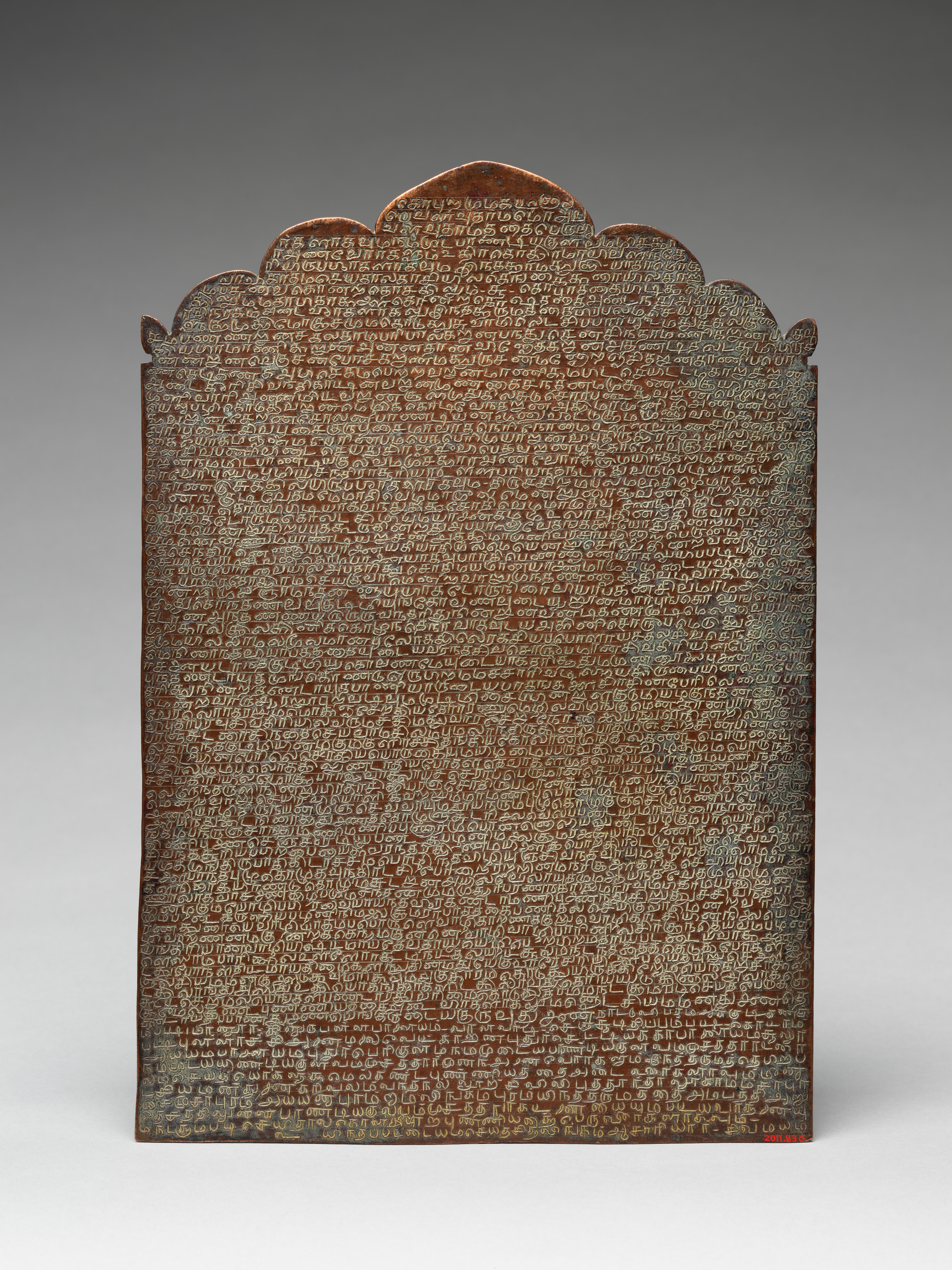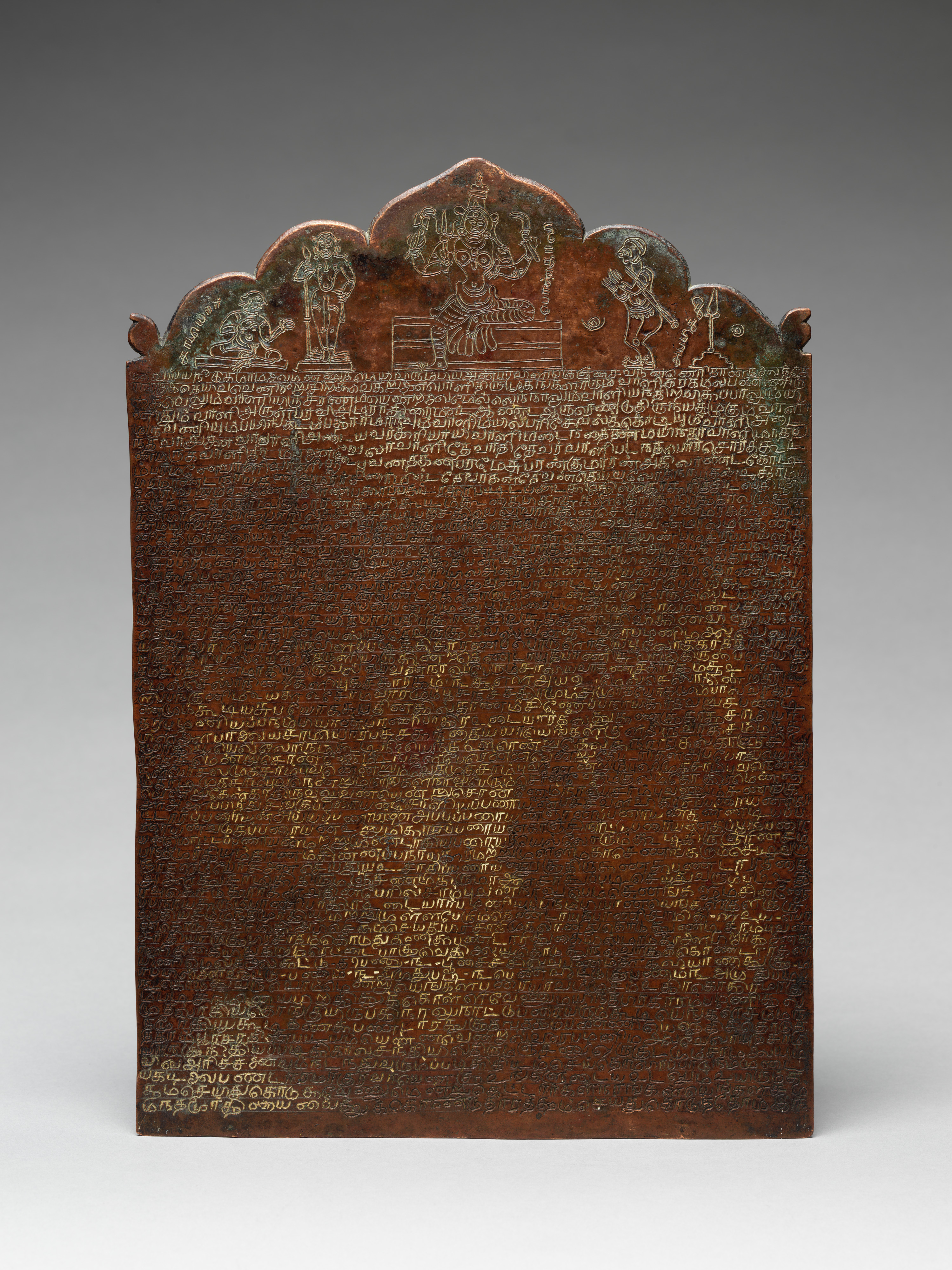Pair of Copper-Plate Inscriptions with Engraved Designs
Not on view
This pair of copper-plate temple records is a fine example of the late survival of a practice for recording in a non-perishable material, legal and other documents. Temple foundation and endowment records take two forms in traditional outh India-they are carved into the doorjambs and basement platforms of temples, and engraved onto copper-plate. The latter has been a preferred method of preserving vital documents, such as the transfer of land title and other deeds, since around the 5th century.
These two copper-plates, engraved in a cursive mature Tamil script and language, record a dedication of gifts to a minor temple. The presiding deities of the temple are depicted in the upper cusped arch reverse. On plate a) the standing figure of Devi, the goddess, flanked by tall oil lamps; to the left is seen a holy man (rishi), perhaps one of the bhakti saints of Tamil Nadu; to the right is seen a female devotee, presumably the donor, making offerings. Plate b) depicts the seated figure of Kali, a wrathful aspect of Devi, and on the left a standing male holding a log-shafted spear, perhaps Skanda /Muragan, son of Siva and Parvati, and adjacent a seated pundit ; to the right is a male devotee making offerings, presumably the husband of the woman on copper-plate a). In both cases they are lively engravings which provide a pictorial rendering of these perennial South Indian deities. The script, which has been examined by the Tamil-specialist at the British Library, London, is in a neat, assured hand. The inscription awaits further study and full translation.
Due to rights restrictions, this image cannot be enlarged, viewed at full screen, or downloaded.
This artwork is meant to be viewed from right to left. Scroll left to view more.







